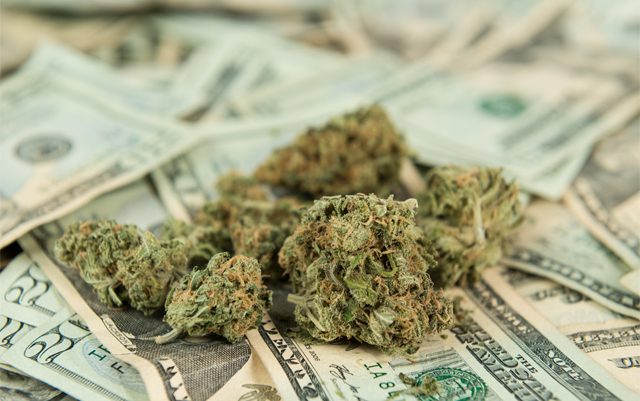One of the biggest benefits of legalizing cannabis and creating a commercial industry is the tax revenue. Every state needs more revenue than they are able to generate – and those that have moved forward in marijuana reform have utilized the growing cannabis industry as a means to bring in that much needed funding. The only problem is actually collecting that tax money, considering the cannabis industry lacks access to banks and is almost entirely a cash industry. For Alaska, this means transporting large amounts of cash, in some cases clear across the state, to a designated drop-off location in Anchorage.
Cannabis industry business owners have multiple options on how to pay their taxes; they can personally take them down to the location in Anchorage where residents also go to pay child support, or sign up for a yearly check from the state’s oil wealth fund. If they go this route, the money must be in a tamper-proof bag, which they will drop into a drum that opens up into a chute, which in turn drops the money in a safe. Quite a complicated process – but necessary in order for them to keep the money safe.
If businesses are too far away to make this trip, then they have additional options available. They can choose to mail their money via registered mail and it will be picked up by an armed carrier who will take it to the drop off location, or the other option is to send the money electronically, wired or by check – which is difficult due to the lack of banks willing to work with the industry due to the federal laws against cannabis.
So far, only growers have had to pay their dues, which amount to $50 per ounce of flower and $15 for every ounce of the leftover plant matter sold. This is actually in place of an additional tax during retail sales – which differs from other states where the industry is up and running, who charge a tax on cultivation facilities as well as retail sales.
Unlike most states, where the majority of the tax revenue generated by the cannabis industry goes to benefiting schools first, Alaska is taking a slightly different approach. About half of it will go to programs for reducing the amount of recidivism in the area, the other half will go to the general fund, which would allow it to be used wherever additional funding is needed. At this point, it’s far too soon to say what kind of revenue the state will be looking at over the next year – but the additional revenue will certainly be beneficial to the state.






